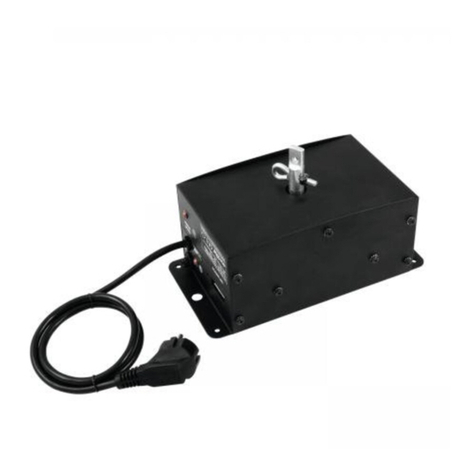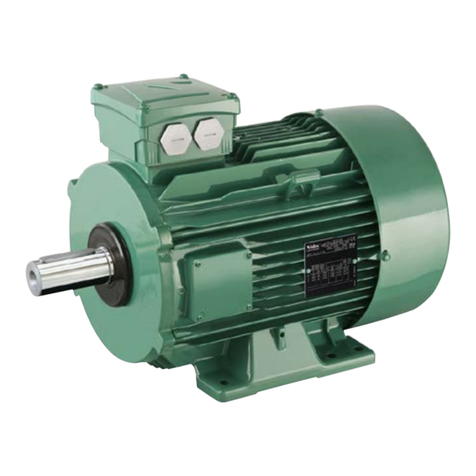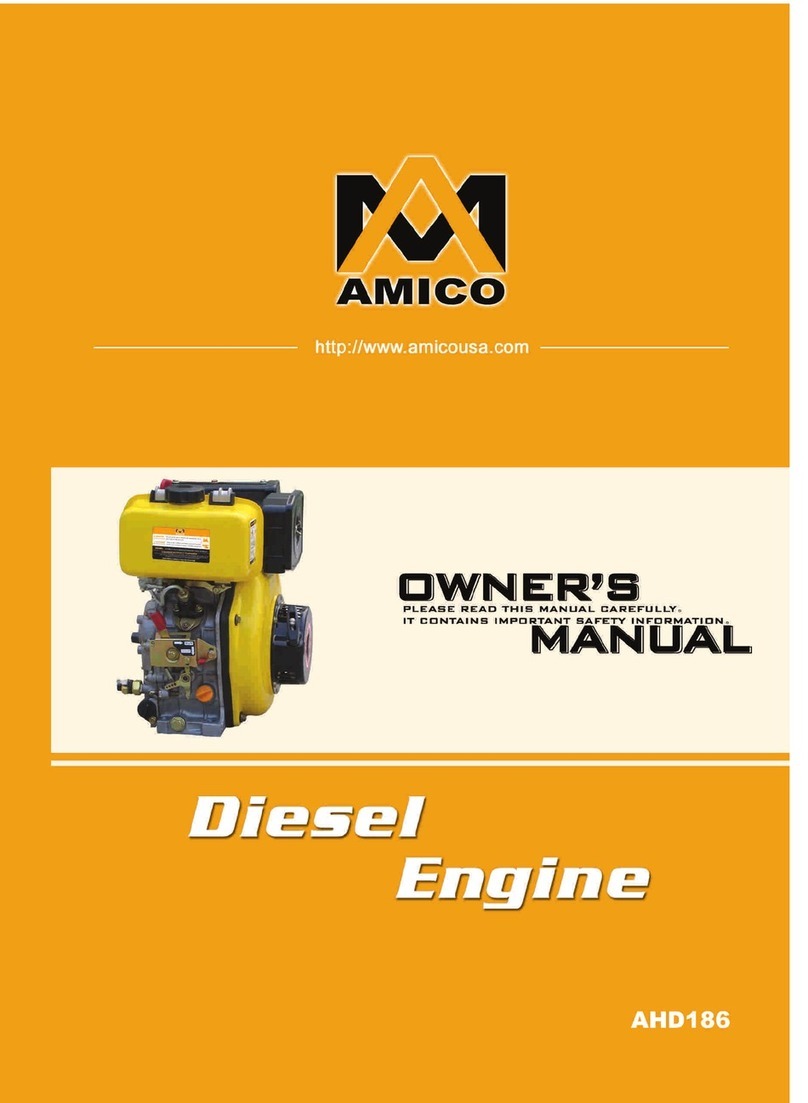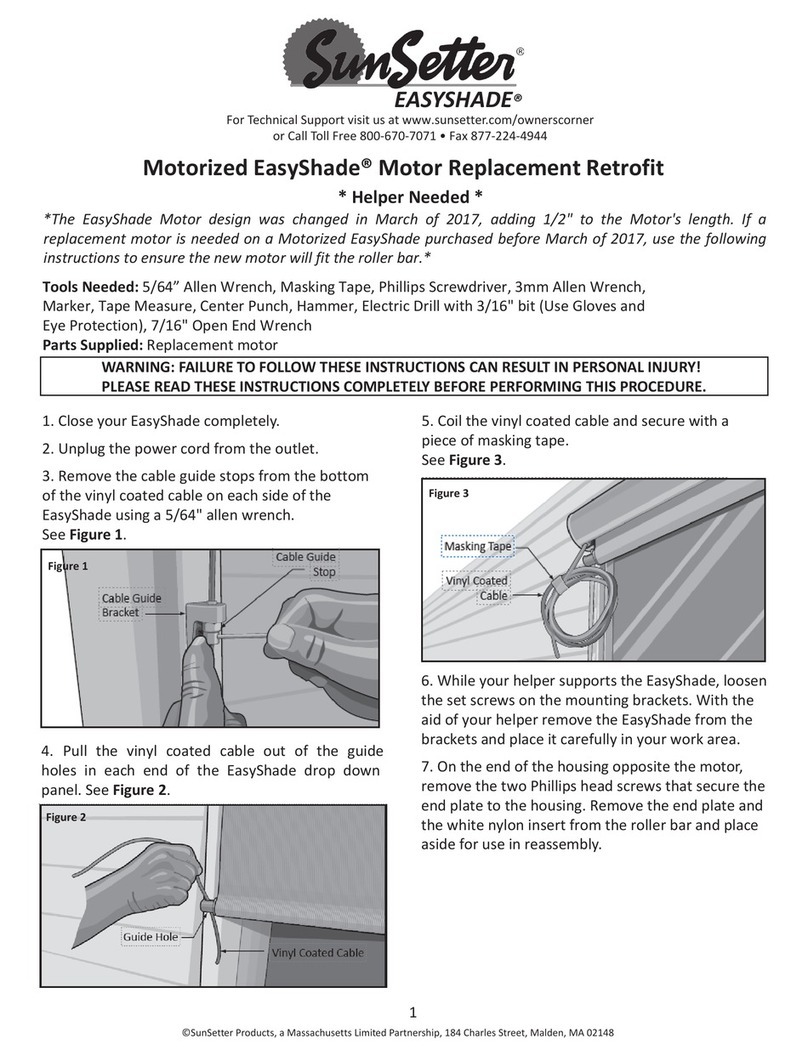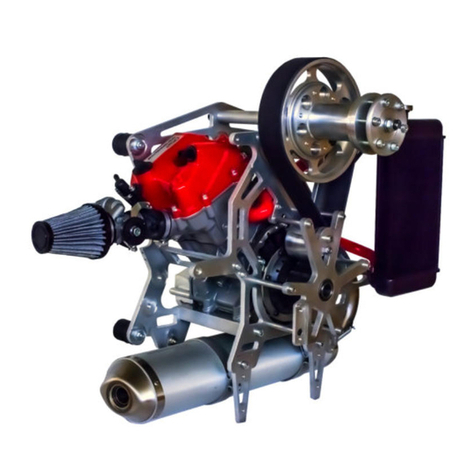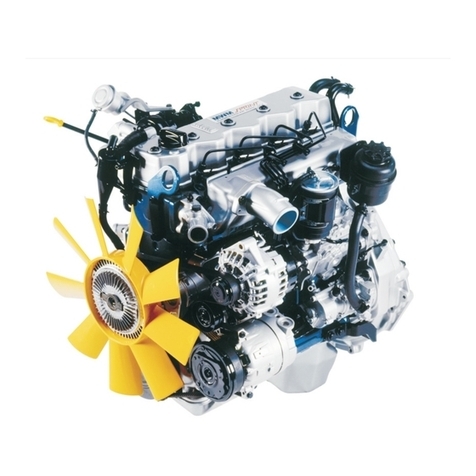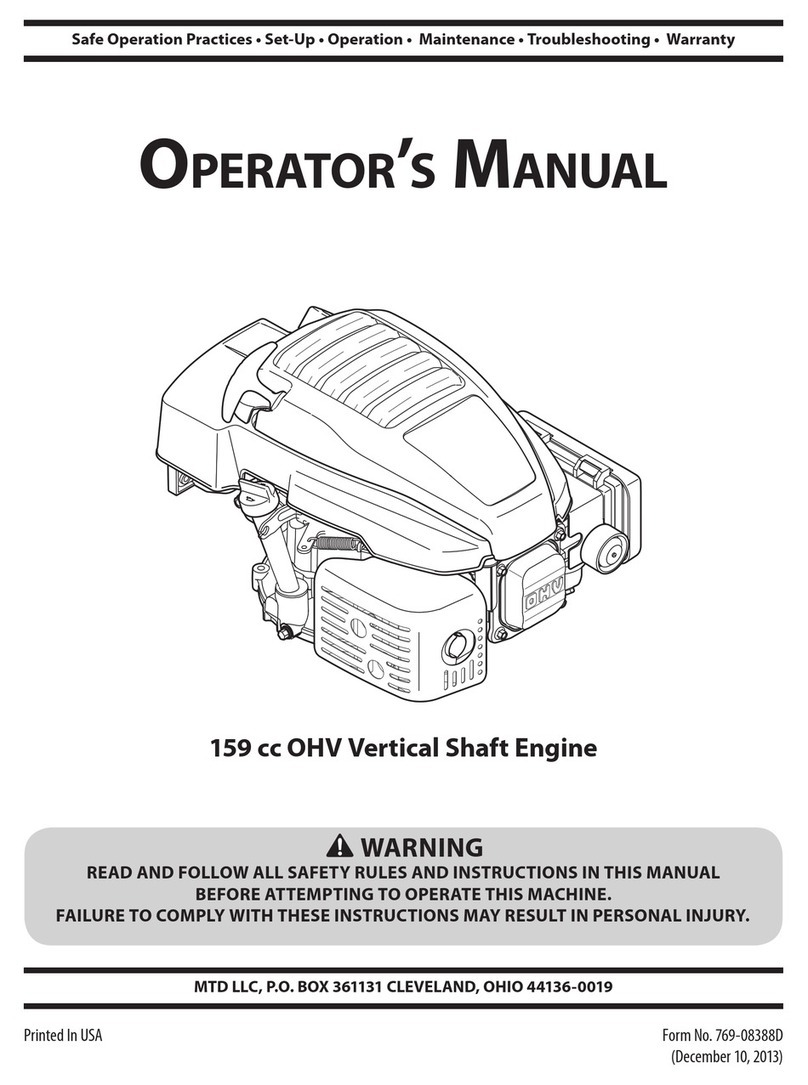Powertrain 8.0L LPG V8 User manual

OPERATOR’SMANUAL
8.0LLPGV8ENGINE


1
TABLE OF CONTENTS
8.0L ENGINE BY POWERTRAIN INTEGRATION
FOREWARD..................................................................................................... 4
WARNINGS, CAUTIONS AND NOTES ............................................................... 4
SECTION I INTRODUCTION.......................................................................... 4
USING THIS MANUAL....................................................................................... 4
BREAK IN PERIOD –NEW ENGINE .................................................................... 4
OIL CHANGE INTERVALS .................................................................................. 4
SECTION II OPERATING INSTRUCTIONS ....................................................... 5
STARTING THE ENGINE .................................................................................... 5
ENGINE WARNING LAMPS............................................................................... 6
WAIT TO START LAMP...................................................................................... 6
CHECK ENGINE LAMP (STEADY) ....................................................................... 6
CHECK ENGINE LAMP (FLASHING) ................................................................... 6
MALFUNCTION INDICATOR LAMP ................................................................... 7
STOP ENGINE LAMP......................................................................................... 7
FUEL................................................................................................................. 7
ENGINE EXHAUST ............................................................................................ 7
SECTION III SERVICE AND MAINTENANCE................................................. 8
GENERAL INFORMATION................................................................................. 8
PERFORMING SERVICE WORK ......................................................................... 8
ENGINE OIL ...................................................................................................... 8
ENGINE OIL ADDITIVES .................................................................................... 9
ENGINE OIL FLUSHES ....................................................................................... 9
CHECKING ENGINE OIL..................................................................................... 9
CHANGING THE ENGINE OIL ............................................................................ 9
OIL CONSUMPTION ......................................................................................... 9
ENGINE AIR CLEANER/FILTER .......................................................................... 9
INSPECTING THE ENGINE AIR CLEANER FILTER ................................................ 9
COOLING SYSTEM /ENGINE COOLANT............................................................ 9
CHECKING COOLANT ..................................................................................... 10
ENGINE OVERHEATING.................................................................................. 10
EMISSION CONTROL EQUIPMENT ................................................................. 11
SECTION IV MAINTENANCE SCHEDULE ....................................................11
RECOMMENDED FLUIDS AND LUBRICANTS................................................... 13
MAINTENANCE REPLACEMENT COMPONENTS............................................. 13
SECTION V WARRANTY...........................................................................14
LIMITED WARRANTY ON 8.0L LPG ENGINES .................................................. 14
LPG ENGINE WARRANTY COVERED PARTS…………………………………………………..17
SECTION VI CUSTOMER ASSISTANCE .......................................................18
TECHNICAL SERVICE....................................................................................... 18
WARRANTY CLAIMS....................................................................................... 18
COMPONENT ORDERS................................................................................... 18
SECTION VII ALPHABETICAL INDEX ...........................................................31

2
©copyright 2014 11290 Rev B
TABLE OF CONTENTS
LIQUID PROPANE INJECTION SYSTEM
INTRODUCTION .............................................................................................20
MODELS COVERED IN THIS MANUAL .............................................................20
USING THIS MANUAL.....................................................................................20
SAFETY WARNINGS........................................................................................20
SECTION I DRIVING AND OPERATING ........................................................20
STARTING ALPI ENGINE ................................................................................. 20
STARTING PROCEDURE .................................................................................. 20
EVAPORATIVE SYSTEM PUMP........................................................................ 21
FUEL............................................................................................................... 21
FILLING YOUR LPI FUEL TANK......................................................................... 21
REFUELING STATION INFORMATION............................................................. 21
PROPER REFUELING PROCEDURE .................................................................. 21
FUEL SYSTEM LEAK ........................................................................................ 22
SECTION II GENERAL VEHICLE CARE............................................................22
JUMP STARTING ............................................................................................ 22
TOWING YOUR VEHICLE ................................................................................ 22
STORING YOUR VEHICLE ................................................................................ 22
RETURING TO SERVICE................................................................................... 23
LIFTING YOUR VEHICLE .................................................................................. 23
PAINTING THE VEHICLE.................................................................................. 23
SECTION III SERVICE AND MAINTENANCE................................................24
MAINTAINING YOUR VEHICLE ....................................................................... 24
MAINTENANCE SCHEDULE ............................................................................ 24
SECTION IV TECHNICAL INFORMATION ...................................................24
FUEL TANK CAPACITIES.................................................................................. 24
PROPANE DIAMOND STICKER........................................................................ 24
SIDE MOUNTED TANK SHUT OFF LOCATION.................................................. 25
BETWEEN FRAME RAIL MOUNTED TANK SHUT OFF LOCATION..................... 26
SECTION V WARRANTY...........................................................................28
CLEANFUEL USA (CFUSA) LIMITED WARRAVTY............................................. 28
EMISSION COMPONENTS FOR 8.0L V8 LPG-FUELED ENGINES....................... 29
SECTION VICUSTOMER ASSISTANCE .......................................................30
TECHNICAL SERVICE....................................................................................... 30
WARRANTY CLAIMS....................................................................................... 30
COMPONENT ORDERS................................................................................... 30
SECTION VII ALPHABETICAL INDEX ...........................................................31

3
©copyright 2014 11290 Rev B
OPERATOR’S MANUAL
8.0 L V8 ENGINE – LPG

4
©copyright 2014 11290 Rev B
FOREWARD
This manual contains the latest information available
at the time of publication. Powertrain Integration,
LLC reserves the right to make future changes in the
products or information contained in this manual
without prior notice.
Keep this manual with the vehicle. If the vehicle is
traded or sold, give this manual to the future owner.
WARNINGS, CAUTIONS and NOTES
This manual contains several different WARNINGS,
CAUTIONS, and NOTES that must be observed to
prevent personal injury and/or damage to the en-
gine, fuel system or personal property.
A warning statement is used when an operating pro-
cedure, practice, etc., which, if not correctly fol-
lowed, could result in serious personal injury or loss
of life.
A caution statement is used when an operating pro-
cedure, practice, etc., which, if not correctly fol-
lowed, could result in personal injury or damage to
or destruction of equipment.
NOTE: A note is used when an operating procedure,
practice, etc. is essential to highlight.
IMPORTANT: An important statement generally de-
notes a situation which requires strict adherence to
the assembly, tightening, or service procedure. Fail-
ure to observe this procedure could result in an un-
safe condition, improper performance of the engine
or fuel system, and may influence the terms of the
warranty.
SECTION I
INTRODUCTION
Your new Powertrain Integration 8.0L engine has
been designed and built to operate on Liquefied Pe-
troleum Gas (LPG), commonly referred to as propane
or autogas. Propane fuel is readily available and,
when used as an engine fuel, provides a reduction in
harmful exhaust emissions.
This manual has been prepared as a supplement to
the OEM operator manual to inform the operator of
the specific items regarding the engine.
USING THIS MANUAL
This manual contains information which is unique to
the Powertrain Integration 8.0L LPG engine. It
should be used in conjunction with the OEM Opera-
tor Manual. If, after reviewing the information con-
tained in this manual, there are questions about the
information please contact Powertrain Integration
(Refer to Section V, Customer Assistance Infor-
mation) for clarification.
It is recommended that this manual be completely
reviewed upon receipt of vehicle. This will allow fa-
miliarization of the operation and special features of
the Powertrain Integration 8.0L LPG engine.
BREAK IN PERIOD NEW ENGINE
The engine does not need an elaborate break-in.
However it will perform better if these basic guide-
lines are followed:
•Use conventional oil (non-synthetic) for first
10,000 miles
•For the first 500mi (805km):
oKeep the vehicle speed at 55 mph (88km/h)
or less.
oDo not drive at any one constant speed.
Vary vehicle speed within posted speed lim-
its.
oAvoid wide open throttle acceleration.
oAvoid downshifting to brake or slow the ve-
hicle.
oAvoid steady idling for extended periods
(longer than five minutes).
NOTE: Oil consumption is normal during operation
of a propane engine. The rate of consumption is
highly dependent on vehicle load, city, and highway
driving and duty cycles. New engines may experi-
ence higher oil consumption during the engine
break-in period. After the break-in period, oil usage
up to one quart per 1,500 miles is in the acceptable
range. Oil level should be checked at every fuel stop.
OIL CHANGE INTERVALS
The engine oil and filter must be changed every
5,000 miles (8,064 km). The crankcase capacity
is 8 qts, 9 qts with the filter. Refer to the OEM
operator manual for oil change instructions.

5
©copyright 2014 11290 Rev B
SECTION II
OPERATING INSTRUCTIONS
STARTING THE ENGINE
IMPORTANT: For service issues and questions call
Powertrain Integration. Representatives will be
able to answer questions and diagnose mechanical
issues as well as provide detailed service repair in-
formation.
Prior to operating the vehicle perform engine pre-
trip inspection and daily maintenance checks. Refer
to the OEM Operator Manual.
If the engine does not start on the first attempt
make sure that the engine has completely stopped
rotating before reapplying the starter switch. Fail-
ure to do so may cause ring gear and starter pinion
damage. Ring gear and starter pinion damage
caused by improper starting procedures is not war-
rantable.
Never attempt to start any electronically-controlled
engine using ether or any other starting fluid. Seri-
ous engine damage, or personal injury, could result.
NOTE: Starting a LPG (propane) engine is slightly
different than a gasoline vehicle. Before the vehicle
will start the engine must be supplied with liquid
fuel. Since the previous run period the fuel may
have expanded or vaporized in the fuel lines and
injectors. A priming process is activated each time
the ignition key is rotated to the ON position.
IMPORTANT: Do not depress the throttle pedal
while starting the engine.
1. Make sure that the transmission shift control is
in Neutral (N) and the Parking Brake is set.
2. Turn the ignition switch to the ON position. The
Wait to Start Lamp in the instrument cluster will
illuminate for a brief time.
Ignoring the Wait to Start lamp may result in a
backfire through the intake manifold, rough idle,
slow run-up, or hesitation on first tip in.
Do not crank the engine for more than 30 seconds
at a time. Wait two minutes after each try to allow
the starter to cool. Failure to do so may cause
starter damage.
3. When the Wait to Start lamp goes out, do the
following:
4. Rotate the ignition key to the START position.
After the engine starts, release the key.
5. After the engine has started let it run for 20-30
seconds before a load is put on the engine.
Bring the engine up to operating speed gradual-
ly as it warms up and develops stable oil pres-
sure.
IMPORTANT: When the engine is started it takes a
short time to build up a lubricating oil film between
the shafts and bearings, and between the pistons
and cylinder walls.
6. Do not race the engine immediately after start-
ing it. Operate the engine and transmission gen-
tly until the oil warms up and lubricates all mov-
ing parts.
7. If the vehicle starts briefly but then stops, turn
the key to the OFF position for at least three (3)
seconds, then repeat the starting process.
If the vehicle
is left with the engine running, it could potentially
overheat or the vehicle could move suddenly if the
shift lever is not fully engaged in Neutral (N) and
the Parking Brake firmly set. Do not leave the en-
gine running if the vehicle is unattended.
It is best to not leave the vehicle parked with the
engine running, but, if required, please note that
idling a vehicle in an enclosed area with poor venti-
lation is dangerous. Engine exhaust may enter the
vehicle. Never run the engine in an enclosed area
that has no fresh air ventilation.

6
©copyright 2014 11290 Rev B
ENGINE WARNING LAMPS
WAIT TO START LAMP
The WAIT TO START lamp will illuminate for a brief
time after the key is turned to the run position. This
waiting period allows the fuel rails to be purged of
vapor and supplied with liquid propane fuel. Engine
cranking is possible, but not recommended while the
lamp is on. When the lamp turns off and the key is
turned to the start position the engine will start. If
the engine is not started within 15 seconds after the
lamp goes out the key should be cycled back to the
off position and then again to the run position to
repeat the wait to start process.
CHECK ENGINE LAMP (Steady)
A steady illumination of the CHECK ENGINE LAMP
indicates that there is a fault with some aspect of
the engine operating system. Some faults may put
the engine into a reduced power mode to protect
components. This reduction in power will be notice-
able to the operator of the vehicle. The vehicle
should be taken to an OEM authorized service facili-
ty for service as soon as possible. Failure to maintain
the engine operating system could void the warran-
ty.
CHECK ENGINE LAMP (Flashing)
A flashing CHECK ENGINE LAMP is an indication of
an engine misfire. Misfires occur when the combus-
tion process in one or more cylinders is not properly
completed. This could lead to fuel passing through
the engine and into the exhaust system, which could
damage catalytic converters. Individual cylinders
may be deactivated as a means to protect the cata-
lytic converters, which will result in a decrease in
engine power. To prevent more serious damage to
the vehicle:
•Reduce engine speed.
•Avoid hard accelerations.
•Avoid steep uphill grades.
If the light continues to flash, find a safe place to
stop and park the vehicle. Turn the vehicle off, wait
at least 10 seconds, and restart the engine. If the
light is still flashing have the vehicle serviced as soon
as possible. The engine should not be operated for
extended periods while a flashing CHECK ENGINE
LIGHT is present or damage to the catalytic convert-
ers will result. Catalytic converters damaged by driv-
ing the vehicle with a flashing check engine light are
not covered under warranty. The vehicle should be
taken to an OEM authorized service facility for ser-

7
©copyright 2014 11290 Rev B
vice as soon as possible. Failure to maintain the
emissions system could void the warranty.
MALFUNCTION INDICATOR LAMP (MIL)
If the vehicle is continually driven when the MIL is
activated, the emission controls may not function,
the vehicle fuel economy may deteriorate, and the
engine may not run smoothly. This could lead to
costly repairs that may not be covered by the en-
gine warranty.
NOTE: Modifications made to the engine, transmis-
sion, exhaust, intake, fuel system of the vehicle, or
replacing the original tires with tires that do not
meet the same tire performance criteria may affect
the vehicle’s emission controls and can cause the
MIL to activate. Modifications to these systems
could lead to costly repairs not covered by the en-
gine or vehicle warranty. This could also result in a
failure to pass required emission inspection and/or
maintenance tests.
AMALFUNCTION INDICATOR LAMP indicates that a
malfunction has been detected in the vehicle emis-
sion system. The vehicle can continue to be driven
normally. Diagnosis and service may be required to
correct the malfunction. The vehicle should be tak-
en to an OEM authorized service facility for service
as soon as possible. Failure to maintain the emis-
sions system could void the warranty.
STOP ENGINE LAMP
The STOP ENGINE LAMP indicates that a severe fault
condition exists and the engine should be shut down
as soon as it is safe to do so. Damage to the engine
and/or catalytic converter may already be occurring
or have occurred when this lamp illuminates. When
the STOP ENGINE LAMP illuminates the engine will
go in to reduced power mode. If the engine is shut
down while the vehicle is in service, a single restart
attempt may be performed. Depending on the na-
ture of the fault condition, a cool-down period may
be required before restarting. If, upon restarting,
the fault condition still exists the lamp will come on
and the engine should be shut down. At this point
the vehicle is unsafe to drive and should be trans-
ported to an OEM authorized service facility.
FUEL
IMPORTANT: Using the recommended fuel (pro-
pane) is an important part of the proper mainte-
nance of this vehicle.
This engine is powered by clean burning Liquefied
Petroleum Gas (LPG), commonly referred to as pro-
pane or autogas. Propane is recognized worldwide
for its contribution to lower emissions, cleaner air,
energy independence and lower operating costs.
It is recommended to use HD5 grade propane. HD5
is Heavy Duty Engine grade propane with a minimum
of 90% propane and a maximum of 5% propylene.
This grade of propane is 100 plus octane and will
provide proper performance and emissions control,
which the fuel system is designed to deliver.
The fuel should be free of contamination including
but not limited to rust, dirt, sand water, salt and
brine. Damage to components resulting from gross
contamination is NOT covered under warranty.
LPG is colorless, odorless and is stored as a liquid in
the fuel tank. A distinctive odorant is added to LPG
for safety. The odor smells similar to sulfur or rotten
eggs.
ENGINE EXHAUST
Engine exhaust contains carbon monoxide (CO)
which cannot be seen or smelled. Exposure to CO
can cause unconsciousness or loss of life.
Engine exhaust may enter the vehicle if:
•The vehicle idles in areas with poor ventila-
tion (parking garages, tunnels, deep snow
that may block underbody airflow or tail
pipes);
•The exhaust smells or sounds strange or dif-
ferent;
•The exhaust system leaks due to corrosion
or damage;
•The vehicle exhaust system has been modi-
fied, damaged, or improperly repaired;
•There are holes or openings in the vehicle
body from damage or aftermarket modifica-
tions that are not completely sealed.
If unusual fumes are detected or if it is suspected
that exhaust is coming into the vehicle:

8
©copyright 2014 11290 Rev B
•Drive it only with the windows completely
open.
•Have the vehicle repaired immediately.
Never leave the engine running with the vehicle
parked in an enclosed area such as a garage or a
building that has no fresh air ventilation.
SECTION III
SERVICE AND MAINTENANCE
GENERAL INFORMATION
A vehicle with the 8.0L LPG engine is an important
investment. Proper maintenance helps to keep the
engine and vehicle in good working condition, im-
proves fuel economy, and reduces vehicle emissions
for better air quality. It is recommended that ASE-
trained technicians perform these services. This
section describes the required maintenance for the
engine. The owner/operator of the vehicle is respon-
sible for scheduled maintenance.
Damage caused by improper maintenance can lead
to costly repairs and may not be covered by the
engine warranty. Maintenance intervals, checks,
inspections recommended fluids, and lubricants are
important to keep the engine in good working con-
dition.
Maintenance needs vary due to the different ways
vehicles are utilized. The vehicle might need more
frequent checks and services. Please read the infor-
mation under Scheduled Maintenance. To keep the
vehicle in good condition, see your dealer.
The proper replacement parts, fluids, and lubricants
to use are listed in Recommended Fluids and Lubri-
cants. We recommend the use of genuine parts from
your dealer.
PERFORMING SERVICE WORK
Some maintenance work can be dangerous and
cause serious injury. Perform maintenance work
only if the required information, proper tools and
equipment are available. If the information/tools
are not available, seek out a trained technician to
perform the work.
If performing service on engine, use the proper ser-
vice manual. The service manual provides in-depth
detail on how to service the engine.
Keep detailed maintenance records. List the mileage
and the date of any service work performed.
ENGINE OIL
To ensure proper engine performance and long life,
careful attention must be paid to engine oil. Follow-
ing these simple, but important steps will help pro-
tect the vehicle:
•Always use engine oil approved to the
proper specification and of the proper vis-
cosity grade.
•Check the engine oil level at every fuel stop
and maintain the proper oil level. See
Checking Engine Oil on page 12.
•Change the engine oil at the appropriate
maintenance intervals
Use engine oil that is identified as American Petro-
leum Institute (API) “SN” (or most current) stand-
ard. Failure to use the recommended oil can result
in engine damage and will void the engine warran-
ty.
When determining the type of engine oil to use, look
for:
•The API starburst symbol. Oils that display
the starburst symbol must meet the re-
quirements of ILSAC GF-2 to display the
mark.
•SAE 5W-30 (The recommended oil for the
Powertrain Integration engine.)
SAE 5W-30 has the best viscosity grade for the en-
gine. Do not use other viscosity oils such as
SAE 10W-30, 10W-40, 15W40, or 20W-50. Conven-

9
©copyright 2014 11290 Rev B
tional oil (non-synthetic) is recommended for the
first two oil changes and any “top-off” through
10,000 miles (16,000 km). Partial or fully synthetic
oils may be used after the first two oil changes.
ENGINE OIL ADDITIVES
Do not add anything to the oil. The recommended
oils with the API starburst symbol are all that is
needed for good performance and engine protec-
tion.
ENGINE OIL FLUSHES
NOTE: Engine oil system flushes are not recom-
mended and could cause engine damage not cov-
ered by the engine warranty.
CHECKING ENGINE OIL
It is important to check the engine oil level regularly
and keep it at the proper level. In order to get an
accurate reading, the vehicle must be on level
ground.
Obtaining an accurate oil level reading is essential:
1. Turn off the engine and allow several minutes
for the oil to drain back into the oil pan. Check-
ing the oil level too soon after engine shutoff
will not provide an accurate oil level reading.
2. Pull out the dipstick and clean it with a paper
towel or cloth, then push it back in all the way.
Remove it again, keeping the tip down, and
check the level.
3. If the oil is below the crosshatched area at the
tip of the dipstick, add 1 quart (liter) of the rec-
ommended oil and then recheck the level.
4. Add enough oil to put the level in the cross-
hatched area on dipstick. Push the dipstick all
the way back in when finished.
NOTE: Oil should be within the cross-hatched area
of the dipstick.
Oil levels that are above or below the acceptable
operating range (the crosshatched area on the dip-
stick) are harmful to the engine. If the oil level is
above or below the operating range oil should be
added or removed to bring it into the operating
range. Operating the engine when the oil is not in
the operating range could cause engine damage.
CHANGING THE ENGINE OIL
The engine oil and filter must be changed every
5,000 miles (8,064 km) or less depending on operat-
ing conditions. The crankcase capacity is 8 quarts, 9
with the filter. Refer to the OEM Operator Manual
for oil change instructions.
OIL CONSUMPTION
All engines require oil to lubricate and protect the
load bearing and internal moving parts from wear
including cylinder walls, pistons and piston rings.
When a piston moves down its cylinder, a thin film of
oil is left on the cylinder wall. During the power
stroke, part of this oil layer is consumed in the com-
bustion process. As a result, varying rates of oil con-
sumption are accepted as normal in all engines.
Oil consumption is normal during operation of the
8.0L propane engine. The rate of consumption is
highly dependent on vehicle loading, highway/city
driving and duty cycles. New engines may experi-
ence higher oil consumption during the engine
break-in period. After the engine break in period,
the acceptable rate of oil consumption for the 8.0L
Powertrain Integration propane engine is one quart
per 1,500 miles (2,414km).
For further information refer to the Powertrain Inte-
gration Service Manual or contact Powertrain Inte-
gration.
ENGINE AIR CLEANER FILTER
Inspect the air cleaner filter at the scheduled
maintenance intervals and replace it when the re-
striction indicator reaches 15 inches H2O/3.7kpa.
Refer to the OEM Operator Manual for more infor-
mation. If driving in dusty/dirty conditions, inspect
the filter at each engine oil change.
INSPECTING THE ENGINE AIR CLEANER FILTER
Prior to inspection, turn the engine OFF. Refer to
the OEM Operator Manual for proper procedure.
Never use compressed air to clean the filter.
COOLING SYSTEM / ENGINE COOLANT
The cooling system allows the engine to maintain
the correct working temperature.
The cooling system in the vehicle is filled with an
Organic Acid Technology with a Nitrite Additive
(NOAT) Extended Life Coolant (ELC). With proper
maintenance this coolant is designed to remain in

10
©copyright 2014 11290 Rev B
the vehicle for six (6) years or 600,000 mi
(960,000km), whichever occurs first.
Using engine coolant other than the factory fill can
cause premature engine, heater core, or radiator
corrosion. In addition, the engine coolant could
require changing sooner, at 50 000 km (30,000 mi)
or 24 months, whichever occurs first. Any repairs
would not be covered by the vehicle warranty.
Using an improper engine coolant mixture could
cause the engine to overheat. The repair cost
would not be covered by the warranty. Too much
water in the mixture can freeze and crack the en-
gine, radiator, heater core, and other parts.
For the LPG engine, a 50/50 pre-mixture coolant
should be used. If this mixture is used nothing else
needs to be added. This mixture will:
•Give freezing protection down to -34oF (-
37oC);
•Give boiling protection up to 265oF (129oC);
•Protect against rust and corrosion;
•Will not damage aluminum parts;
•Provide water pump lubrication;
•Help keep the proper engine temperature.
The coolant warning system is set for the proper
coolant mixture (50/50 pre-mixture coolant). Over
time, water may permeate through hoses, resulting
in a coolant-rich mixture in the cooling system.
Always use test strips appropriate for the coolant
type to check the coolant properties. Top off the
cooling system accordingly to maintain a 50/50
mixture.
Severe engine damage may result from running the
engine when low on coolant or out of coolant. En-
gine damage caused by running the engine low on
coolant or out of coolant is not covered by the en-
gine warranty.
CHECKING COOLANT
Refer to the OEM Operator Manual for checking en-
gine coolant levels and coolant conditions (i.e.; rust,
cloudy, dirt, other contaminants).
ENGINE OVERHEATING
Steam from an overheated engine can cause burns.
Stay away from the engine and vehicle hood if
steam is seen or heard. Turn off the engine and
move away from the vehicle until the engine cools
down. Wait until there is no sign of steam or cool-
ant before opening the vehicle’s hood. If driving
continues when the engine is overheated, severe
engine damage could result.
The vehicle has indicators to warn of engine over-
heating. Refer to the OEM Operator Manual for lo-
cation of the vehicle’s coolant temperature gauge.
If the engine becomes overheated there will be a
warning buzzer and a message will appear in the
instrument cluster. The following actions may help
the engine return to normal operating temperature:
•Reduce engine speed.
•Avoid hard accelerations.
•Avoid steep uphill grades
If the condition does not improve The CHECK EN-
GINE LAMP and STOP ENGINE LAMP will come on,
the engine will go into reduced power mode, and
the idle speed will increase to speed up the water
pump and cooling fan to cool the engine. If the
CHECK ENGINE LAMP and the STOP ENGINE LAMP
are on, pull over as soon as it is safe, stop the vehi-
cle, set the parking brake and turn off the engine.
If the decision is made to open the hood, make sure
the vehicle is parked on a level surface and that
there is no danger from steam, leaking fluids and hot
surfaces. Inspect for:
•Broken or missing accessory drive belts.
•Obstructions or debris in front of the vehi-
cle radiator and grill
•Coolant level by looking at the surge tank
(do not remove the surge tank cap).
•Fluid Leaks.
The STOP ENGINE LAMP and buzzer will go out
when the engine reaches normal operating tempera-
ture. The CHECK ENGINE LAMP will remain on until
an inspection service is performed at an OEM au-
thorized service facility.

11
©copyright 2014 11290 Rev B
If it is determined that there are no mechanical fail-
ures or coolant loss, and the engine has cooled down
and the vehicle is safe to drive, the vehicle may be
driven to an OEM authorized service facility for in-
spection as soon as possible.
EMISSION CONTROL EQUIPMENT
Some state/provincial and local governments may
have programs to inspect the on-vehicle emission
control equipment. For the inspection, the emission
system test equipment is connected to the vehicle’s
Data Link Connector (DLC).
The DLC is under the instrument panel to the left of
the steering wheel.
The vehicle may not pass inspection if:
•The malfunction indicator lamp is on with
the engine running; or
•If the light does not come on when the ig-
nition is turned to ON/RUN while the en-
gine is off.
SECTION IV
MAINTENANCE SCHEDULE
AT EACH FUEL STOP
•Check engine oil level.
•Check engine coolant level.
AT EVERY ENGINE OIL CHANGE
•Change engine oil and filter.
•Perform visual inspection of oil cooler hoses
and fittings
•Check engine coolant level.
•Inspect engine cooling system. Visual inspec-
tion of hoses, pipes, fittings, and clamps.
Replace, if needed.
•Inspect engine air cleaner filter.
•Visual inspection of accessory drive belts for
fraying, excessive cracking or damage. Re-
place as necessary.
NOTE: Refer to the OEM Operator Manual for ser-
vice procedures.

12
©copyright 2014 11290 Rev B

13
©copyright 2014 11290 Rev B
RECOMMENDED FLUIDS AND LUBRICANTS
Fluids and lubricants identified below by name, part number, or specification can be obtained from your dealer.
USAGE
FLUID/LUBRICANT
Engine Oil Conventional SAE 5W-30 is recommended.
Engine Coolant
Must meet the following:
Daimler Spec. 48-254961
Detroit Diesel Spec. 93K217
ASTM D6210
Organic Acid Technology with Nitrite Additive (NOAT)
Extended Life Coolant (ELC) 600,000 mile minimum service life guarantee
Ethylene Glycol based
Silicate and phosphate free
MAINTENANCE REPLACEMENT COMPONENTS
PART
POWERTRAIN INTEGRATION PART
NUMBER
GM / AC Delco PART NUMBER
(if applicable)
Engine Oil Filter 11020 PF1218
Spark Plugs* 11309 41-963
Plug Wires 11028 N/A
Air Compressor Drive Belt 11162 N/A
PCV Valve 11105 N/A
*Spark plug gap 0.050

14
©copyright 2014 11290 Rev B
SECTION V
WARRANTY
LIMITED WARRANTY ON 8.0L LPG ENGINES
PRODUCTS WARRANTED
This warranty applies to new 8.0L V8 engines sold by
Powertrain Integration, LLC, on the vehicle it was
originally installed in. The 8.0L engines are fueled by
Liquefied Petroleum Gas (LPG), also known as pro-
pane or autogas.
BASE ENGINE WARRANTY
Powertrain Integration warrants that its engines sold
with this Warranty will meet all applicable specifica-
tions and, under normal use and service, be free
from defect in material or factory workmanship
(Warrantable Condition). This Coverage begins with
the in service date of the vehicle and continues for
the Terms and Conditions stated herein. If the in
service date of the vehicle cannot be determined,
the start of warranty date will be the date the chas-
sis was manufactured.
CLAIMS
All warrantable conditions eligible for warranty
claims for 8.0 LPG engines must be made by calling
the toll free number 855-305-1500 upon initial dis-
covery of an engine needing repair. Any repairs
made or completed prior to calling and receiving
claims or repair authorization will make that repair
ineligible for claims coverage. Prior to issuing an Au-
thorization Number, or paying the repair cost, we
reserve the right to; review/inspect any documenta-
tion regarding the vehicle including but not limited
to maintenance records OEM vehicle analysis soft-
ware reports, and parts in their failed state. Defec-
tive items must be held for inspection or return to
Powertrain Integration or its authorized service facil-
ity within 90 days from the date of repair.
Additional coverage is outlined in the Emission War-
ranty Section.
REPAIRS
Powertrain Integration will pay for parts and labor
(based on the current Powertrain Integration Labor
Time Guide) needed to repair the damage to the
Engine resulting from a Warranted claim.
Parts used in any repair(s) may be new parts or in-
dustry approved rebuilt, remanufactured, or Like
Kind and Quality (LKQ) parts. Powertrain Integration
is not responsible for failures resulting from the use
of parts not approved by Powertrain Integration.
New and/or approved Powertrain Integration part(s)
used in repairing a warranted claim, those parts then
assume the remaining eligible time and mileage of
the remaining warranty term.
Powertrain Integration is not responsible for any
modified production components or the addition of
aftermarket accessories.
SERVICE SUPPLIES
Powertrain Integration will pay for the applicable
replacement of the required fluids and filters in the
event of an authorized eligible claim. Other compo-
nents/items that have normal manufacturer re-
placement intervals are non-eligible for replacement
by Powertrain Integration.
ENGINE REMOVAL AND REINSTALLATION
Powertrain Integration pays reasonable labor costs
(based on the current Powertrain Integration Labor
Time Guide) for Engine removal and re-installation
when necessary to repair a valid Warranted author-
ized claim.
TOWING
On eligible Warranted authorized claims, Powertrain
Integration will pay reasonable costs for towing a
disabled vehicle, (up to $450.00) if eligible, to the
nearest authorized repair location for the first year
from the date of delivery of the Engine or to the first
owner.
THIS WARRANTY DOES NOT COVER:
Repairs Due to Accidents, Comprehensive losses,
Misuse, Storage Damage, Negligence or any Modifi-
cations
MAINTENANCE
Owner is responsible for the continued operation
and continued maintenance of the Engine as speci-
fied in the applicable Powertrain Integration Opera-
tion and Maintenance Manual. Owner is also re-
sponsible for providing proof that all recommended
maintenance has been performed in the event of a
claim. Owner must keep verifiable receipts detailing
the date, mileage/hours and type of services per-
formed. All other components must be serviced and
maintained in strict accordance with the manufac-
turers written instructions.
INCIDENTAL OR CONSEQUENTIAL DAMAGES
Powertrain Integration is not responsible for inci-
dental or consequential costs, which the owner may

15
©copyright 2014 11290 Rev B
incur as a result of a malfunction or failure if covered
by this warranty, such as vehicle damage, earnings,
personal damage(s) storage, communication costs,
per diem expenses, meals, lodging, overtime, loss of
use, time, inconvenience, cargo loss or damage,
and/or other similar costs and expenses.
LIMITATIONS AND EXCLUSIONS
This Warranty only applies to manufacturing defects
in material and workmanship on the Engine. Refer
to Base Engine Warranty for a listing of covered
components. The Warranty shall not apply to the
following:
a) Damage or loss caused in whole or in part
by the acts or omissions of any kind by any
party other than Powertrain Integration;
b) Damage to or from a non-covered part.
c) Damage or loss caused in whole or in part
by misuse, abuse, negligence, theft, abnor-
mal operation, vandalism, alteration or
modification of the Engine, improper instal-
lation, lack of maintenance, unauthorized
repair(s) or failure to follow instructions
supplied with the Engine;
d) Damage(s) or loss caused by any operation
of the Engine with fuels, oils or lubricants
that are contaminated, lacking or under-
filled or unsuitable for the Engine, including
a breakdown caused by the failure to re-
place seals or gaskets in a timely manner;
e) Damage or loss caused by continued opera-
tion of an impaired Engine with knowledge,
or a reason to suspect, that a defective
condition exists;
f) Damage or loss occurring during shipment
(claims must be presented to carrier);
g) Damage or loss caused whole or in part by
exposure to natural atmospheric elements
or corrosive chemicals;
h) Damage or loss caused in whole or in part
from a collision or comprehensive loss;
i) Blown head gaskets, seals or gaskets, fluid
leaks, cracked heads or block, overheating
or other engine failures caused by a lack of
suitable fluids, improper maintenance or
continued operation of an impaired vehicle;
j) Damage or loss to the Engine and/or vehicle
caused by collision, misuse, lack of mainte-
nance, lubrication, cooling and/or intake
systems, unauthorized modifications of the
Engine, over fueling, road conditions, negli-
gence, overloading, fires, floods, riots, acts
of war, acts of God, commission of any
crime;
k) A gradual reduction in operating perfor-
mance due to normal wear and tear, such
as, but not limited to: valve guides, valves,
rings or oil consumption, or normal mainte-
nance items;
l) Equipment, components, items, materials,
products or goods that are manufactured or
supplied by companies other than Power-
train Integration, or which are separately
warranted by another manufacturer or
supplier of such equipment and/or compo-
nents is the warrantor of these said items;
m) Routine maintenance of the Engine.
THIS WARRANTY SET FORTH HEREIN IS THE
SOLE WARRANTY MADE BY POWERTRAIN IN-
TEGRATION WITH REGARD TO THESE ENGINES.
POWERTRAIN INTEGRATION MAKES NO OTH-
ER WARRANTIES, EXPRESS OR IMPLIED, OF
MERCHANTABILITY OR FITNESS FOR A PARTIC-
ULAR PURPOSE.
This Warranty gives you specific legal rights, and you
may also have other rights which vary from state to
state.
ENGINE EMISSIONS WARRANTY
See CleanFUEL USA (CFUSA) Limited Warranty
LIMITATIONS
Engines must be operated using only Liquefied Pe-
troleum Gas (LPG). It is recommended to use HD5
grade propane. HD5 is Heavy Duty Engine grade pro-
pane with a minimum of 90% propane and a maxi-
mum of 5% propylene. This grade of propane is 100
plus octane and will provide proper performance
and emissions control, which the fuel system is de-
signed to deliver.
Failures, other than those resulting from defects in
material or factory workmanship, are not covered by
this Warranty.
Powertrain Integration is not responsible for failures
or damage resulting from what Powertrain Integra-
tion determines to be abuse or neglect, including,
but not limited to: operation without adequate cool-
ants or lubricants; over-fueling; over-speeding; lack
of maintenance of lubricating, cooling or intake sys-
tems; improper storage, starting, warm-up, run-in or
shutdown practices; unauthorized modifications of
the Engine.

16
©copyright 2014 11290 Rev B
Powertrain Integration is not responsible for failures
caused by incorrect oil, fuel, water, dirt or other con-
taminants in the fuel.
Powertrain Integration is not responsible for non-
Engine repairs, “downtime” expenses, cargo dam-
age, fines, all applicable taxes, and business costs
and other losses resulting from a Warrantable Condi-
tion.
POWERTRAIN INTEGRATION IS NOT RESPONSIBLE
FOR INCIDENTAL OR CONSEQUENTIAL DAMAGES.
CALIFORNIA EMISSION WARRANTY, ON-
HIGHWAY
See CleanFUEL USA (CFUSA) Limited Warranty
OWNER’S WARRANTY RESPONSIBILITIES
As the engine owner, you are responsible for the
performance of the required maintenance listed in
your Powertrain Integration Operator’s Manual.
Powertrain Integration recommends that you retain
all receipts covering maintenance on your engine,
but Powertrain Integration cannot deny warranty
solely for the lack of receipts or for your failure to
substantiate the performance of all scheduled
maintenance.
You are responsible for presenting your engine to a
Powertrain Integration authorized service location as
soon as a problem exists. The warranty repairs
should be completed in a reasonable amount of
time.
Owner is responsible for incidental costs such as:
communication expenses, meals, lodging incurred by
Owner or employees of Owner as a result of a War-
rantable Condition.
Powertrain Integration is not responsible for “down-
time” expenses, cargo damage, fines, all applicable
taxes, business costs, and other losses resulting from
a Warrantable Condition.
POWERTRAIN INTEGRATION IS NOT RESPONSIBLE
FOR INCIDENTAL OR CONSEQUENTIAL DAMAGES.

17
©copyright 2014 11290 Rev B
8.0L LPG ENGINE WARRANTY COVERED
PARTS
School Bus
5 Years, 100,000 miles / 160,000 km*
*Whichever occurs first, $10,000 per engine.
Delivery Vehicle
2 Years, Unlimited miles or 2,000 hours*
*Whichever occurs first, $10,000 per engine.
Camshaft
Connecting Rods
Crankshaft
Crankshaft Balancer Bolt
Crankshaft Reluctor Wheel
Cylinder Head Bolts
Cylinder Head Gasket
Cylinder Heads
Engine Block
Exhaust Manifold Gasket
Exhaust Manifolds
Front Timing Cover
Front Timing Cover Seal
Intake and Exhaust Valves
Intake Manifold Gasket
Lifter Valley Baffle
Oil Pan Gasket
Oil Pump Assembly
Oil Stem Valve Seal
Piston Pins
Pistons
Rear Crankshaft Oil Seal
Rocker Arm Assembly
Rocker Arm Stud
Timing Chain Assembly
Timing Cover Gasket
Upper Intake Manifold O-Ring
Valve Cover Gaskets
Valve Guide
Valve Lifters
Valve Push Rods
Valve Retainers
Valve Springs
Water Pump
8.0L LPG WARRANTY COVERED PARTS
2 Years, 24,000 miles / 38,500 km*
School Bus and Delivery Vehicle
*Whichever occurs first,
Air Brake Compressor Bracket
Air Brake Compressor Pulley
Crankshaft Balancer
Crankshaft Pulley (Dual A/C)
Engine Harness
Front Engine Mount
Heater Valve Bracket
Idler Pulleys
Injector Harness
Main Accessory Drive Bracket
Molded Air Induction Tube
Oil Cooler Bypass Adapter
Oil Filter Fitting
Oil Pan and Drain Plug
Rocker Covers
Single and Dual A/C Mounting Brackets
Tensioners
Thermostat Housing
Thermostats
Upper and Lower Intake

18
©copyright 2014 11290 Rev B
SECTION VI
CUSTOMER ASSISTANCE
TECHNICAL SERVICE
For technical service please contact Powertrain Inte-
gration at 855-305-1500.
WARRANTY CLAIMS
Upon initial discovery of an engine needing repair,
please call Powertrain Integration Warranty Services
at 855-305-1500.
COMPONENT ORDERS
For component orders or pricing, contact Powertrain
Integration at sales@ptintegration.com or 855-305-
1500
POWERTRAIN INTEGRATION
SERVICE WEB SITE
www.service.powertrainintegration.com
Table of contents
Popular Engine manuals by other brands
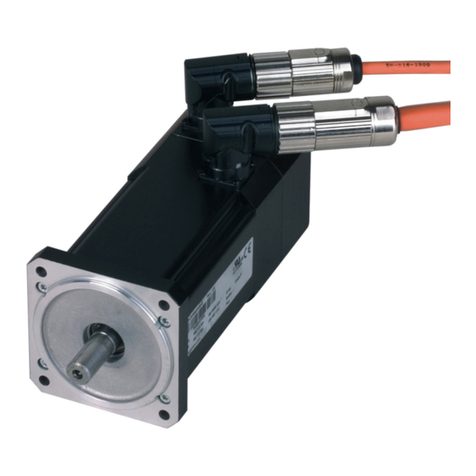
B&R
B&R 8LS 3 Series user manual
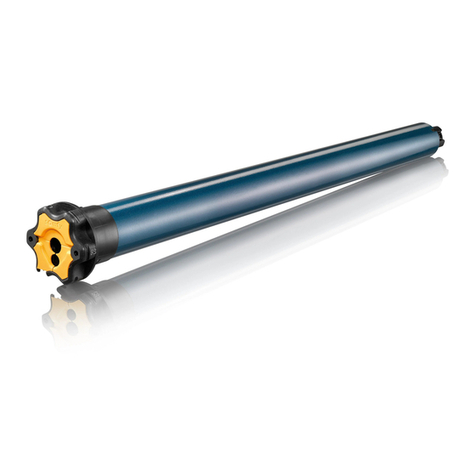
SOMFY
SOMFY LT50 RS485 instructions
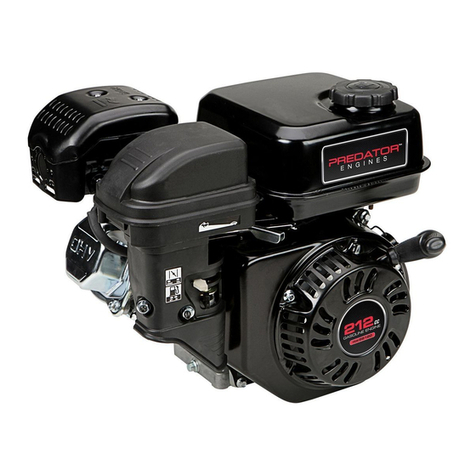
Predator Engines
Predator Engines Pacific Hydrostar 212cc Gasoline Powered Clear Water... Owner's manual & safety instructions
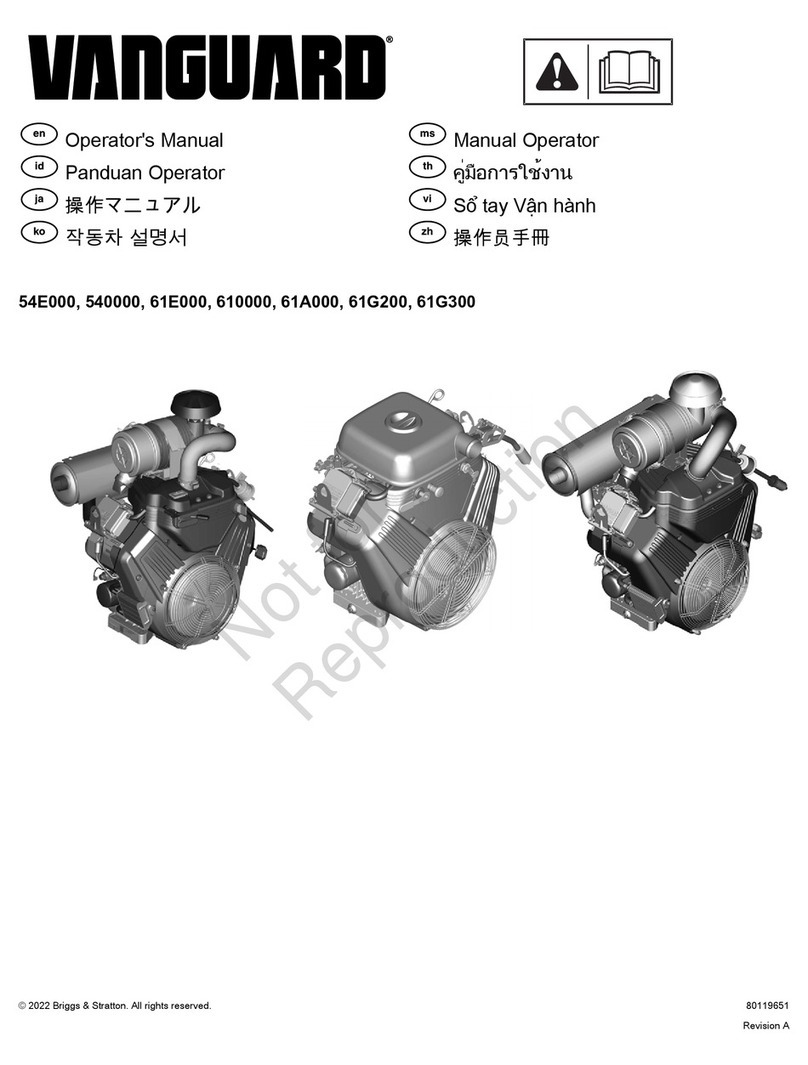
Briggs & Stratton
Briggs & Stratton 54E000 Operator's manual

BMW
BMW N13 Technical training

VOLTRIUM
VOLTRIUM Rogue Dual Motor Series owner's manual
